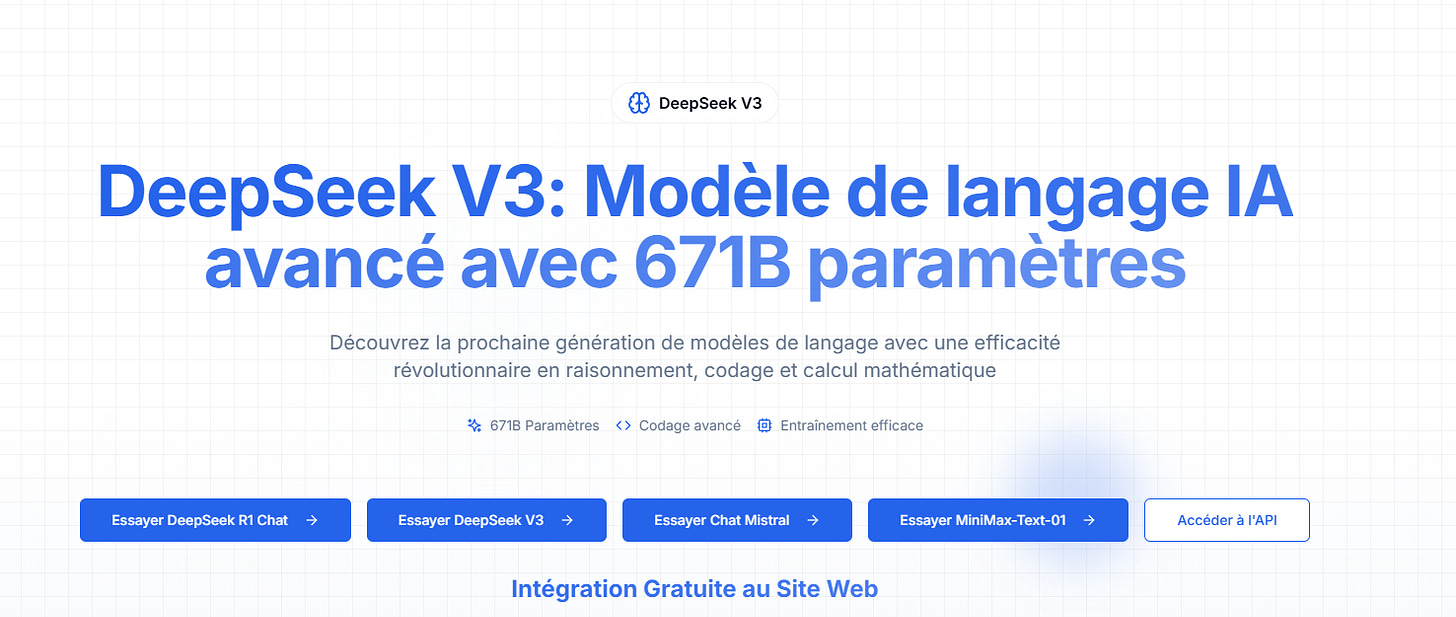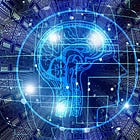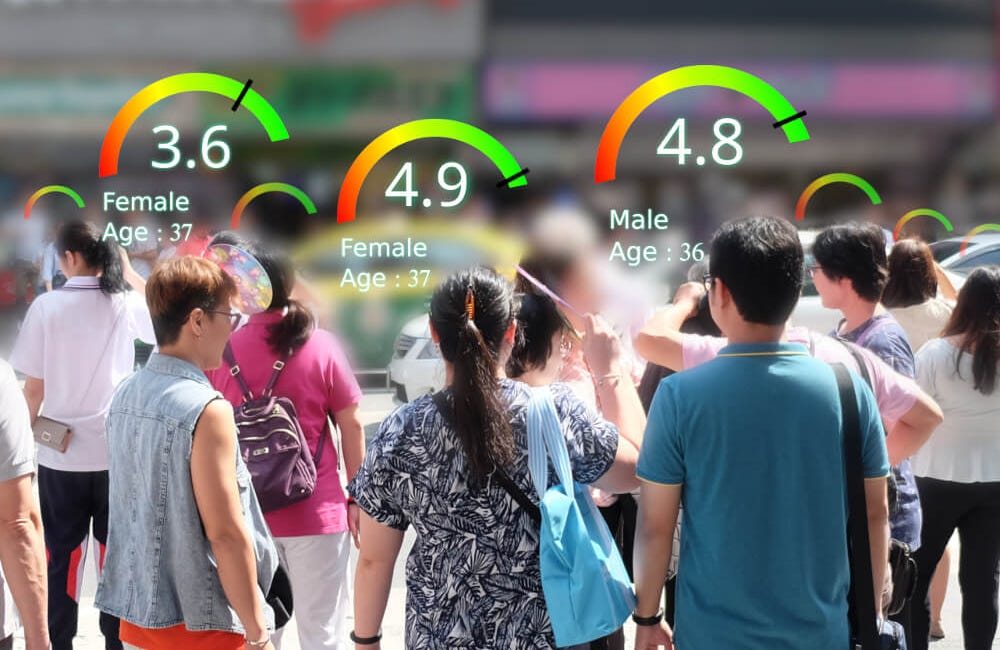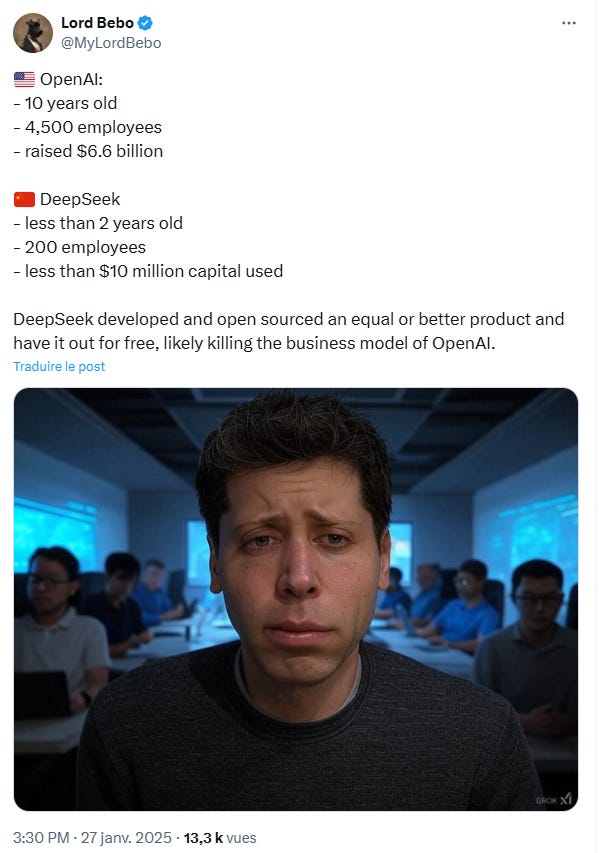China Annihilates Predatory U.S. Techno-Capitalism
By making its engine open source, DeepSeek just did to artificial intelligence what Linux did to server OS.
English translation of our article published on Jan. 26, 2025
As OpenAI, the entity behind ChatGPT, shifts from a non-profit to a for-profit organization, it has also begun to make proprietary most of its features. This is happening while they've managed to secure $6.6 billions in donations. In contrast, the Chinese startup DeepSeek has taken a different approach by releasing the source code of its AI engine. This engine is not only superior but also 96% cheaper to run, requiring less computational power, electricity, infrastructure and hardware investment than ChatGPT. By opting for the MIT open-source license, DeepSeek is snubbing the U.S. and Western tech dominance, as highlighted at the Davos WEF this week.
To fully appreciate this groundbreaking move, one must understand what open source is and what constitutes an AI engine.
Open source means making the software's source code freely available to the public. This allows anyone to use the code at no cost, as it's accessible to all. Users can modify and improve the code under the terms of the open-source license, with the key condition that any changes must not be exploited commercially.
With the code being public, skilled individuals can scrutinize it thoroughly, identifying and fixing swifly security flaws like significant bugs, vulnerabilities, or backdoors. Open source relies on the power of collective intelligence, proving more effective than traditional top-down management and aggressive proprietary control.
This article serves the public interest, so we're providing free access to it. L'Eclaireur does not depend on any public or private subsidies, advertising, or crowdfunding. Our survival and independence are entirely supported by our subscribers.
Linux is the best-known open-source software, the core or kernel of an operating system (OS). This kernel manages a computer's hardware and runs services for applications. Created by Linus Torvalds, it drew inspiration from UNIX, which is a versatile, multitasking, and multi-user OS mainly used on servers.
Building on this kernel, developers have added various elements such as user interfaces, device managers (for network and graphics cards, among others) etc. Linux distributions, which combine the kernel with these components to form a full-featured OS, are numerous, including Ubuntu, Debian, Fedora, Linux Mint, and notably, Android, which powers 82% of smartphones. These distributions are generally available for free. Paid versions offer not the software licence itself but services like maintenance and support.
Developers creating software for Linux do not need to pay for the right to build or distribute their work, unlike on proprietary systems like Microsoft Windows, MacOS, iOS, or Google's Android, which include many proprietary components.
Microsoft's considerable profits stem from its proprietary OS, from MS-DOS to Windows, which compels PC makers and users to buy licenses (the right to use, not own, the software). Developers must also pay for development kits (SDKs) and distribution rights, creating a monopoly-like situation. This business model has allowed major American tech firms to literally exort the world whilst impeding innovation for decades.
Remember server OS like Windows NT and Lotus Domino Server from the 1990s-2000s? Linux has largely supplanted these, providing a free, more efficient alternative that now commands over 80% of the server market. Most cloud servers operate on Linux. This shift has pushed companies like Microsoft and IBM to invest in cloud services since the demand for paid server OS licenses has vanished.
An AI engine is much like an OS kernel. DeepSeek's decision to open-source its AI engine has made selling proprietary AI licenses, starting with ChatGPT, extremely challenging. This could be why Elon Musk made Grok free on X, moving away from its previous paid access thourgh subscription. Meanwhile, Google's Gemini AI faces criticism for its biases and inefficiencies, suggesting a significant setback for Google.
The implication is clear: the era of aggressive American techno-capitalism in AI might be over. Big Tech, the GAFAM as we say on the old continent (Google, Apple, Facebook, Amazon, Microsoft) are underwater. Even the 500bn investment promised by Donald Trump won’t reverse this trend, highlighting the advantages of open-source AI—transparency, security, and rapid development with a variety of options.
Moreover, the U.S. lags behing in hardware, particularly in advanced chips needed for AI, with Taiwan and China leading the charge. Nvidia, the prominent American player, struggles to keep pace, especially with DeepSeek using widely available FPGA chips, typically found in gaming graphics cards.
In Europe, the focus seems misplaced, with leadership more concerned with controlling content through cumbersome regulations rather than ensuring data and infrastructure sovereignty for European citizens and nations.
France uniquely holds thirty years of comprehensive health data for its entire population due to the "carte vitale," an asset of immense value. AI systems are useless without data. Yet, France seems to be allowing American vested interests to pillage this resource.
Some French parliamentarians are diligently working and striving for change, though their efforts have not yet succeeded. This situation extends beyond healthcare, affecting sectors like digital technology, energy, agriculture, and industry.
By releasing DeepSeek as open source, China has provided a significant benefit to humanity. This isn't our claim, but that of Marc Andreessen, a key influencer in Silicon Valley and the developer of Netscape, one of the earliest web browsers.
China's advantage in AI development isn't recent. They've been ahead by regulating algorithms from an early stage, establishing user rights and responsibilities for algorithm creators, which might seem counterintuitive. This approach challenges the stance of Western "liberals" who react strongly against regulation, equating it simply with bureaucratic control.
We've previously discussed this in our article from March 31, 2022.
Excerpt.
China has implemented a three-pronged strategy for regulating artificial intelligence (the term "governance" does not directly translate to French).
Regulatory Framework: A comprehensive set of 30 rules applies to all internet algorithms. For instance, one rule mandates that algorithms must explain their decisions and rectify any violations of user rights. This is significant because platforms like YouTube, Facebook, and Twitter often fail to explain account suspensions, not because they won't, but because they can't fully grasp the reasons behind these actions. Essentially, there's a lack of transparency in what their algorithms are actually doing.
Algorithm Certification: China has developed tools and systems to test and certify algorithms based on their reliability, absence of bias, and their capacity to provide explanations .
Ethical Standards: A collection of ethical guidelines governs AI development, requiring all organizations to establish ethics committees. These committees are responsible for enforcing these guidelines and ensuring compliance.
Surprisingly, China, labeled as a totalitarian and communist state, insists that any decision made by an algorithm or AI system must be explainable and must be corrected if it violates user rights or interests.
Updated on January 27, 2025, at 3:59 PM. In the USA, people are waking up. Sic transit gloria mundi.





![[ Flash ] La Chine vient d'annihiler le techno-capitalisme prédateur américain](https://substackcdn.com/image/fetch/w_140,h_140,c_fill,f_auto,q_auto:good,fl_progressive:steep,g_auto/https%3A%2F%2Fsubstack-post-media.s3.amazonaws.com%2Fpublic%2Fimages%2Faa89474d-49f8-4be3-ab6f-9c8566369f33_1007x715.png)





